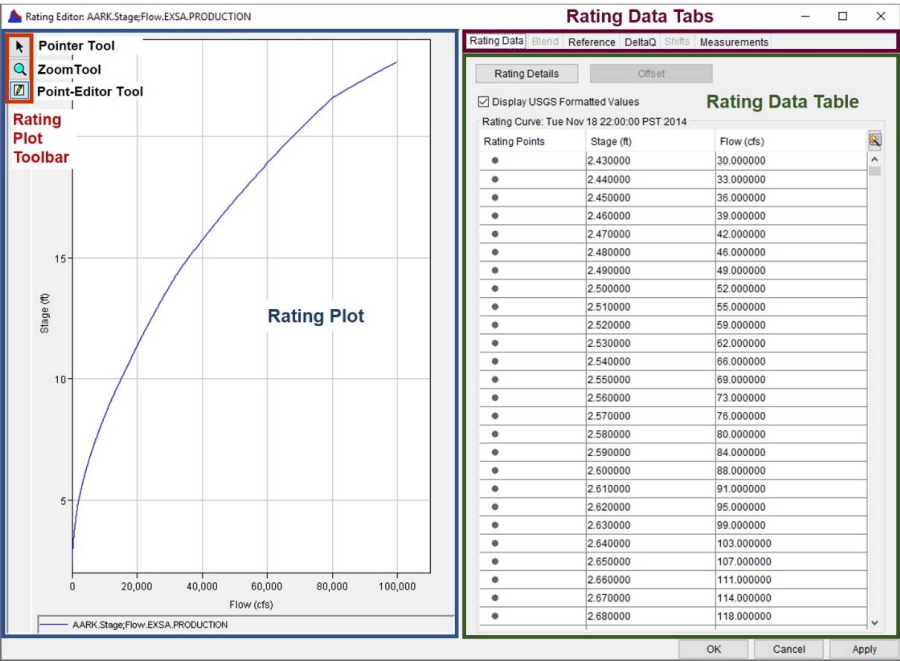A rating is a mathematical relationship between one or several independent parameter(s) and a dependent parameter. Depending on the location where a rating is used, the independent parameter(s) used for rating may be a height such as stage or elevation and additional parameters such as the measurement of a gate's opening. The dependent parameter's values are computed from the values defined for its related independent parameter(s). A rating is a valuable tool in the processing of surface water data for water management purposes.
For hydrologic systems, ratings are available for different locations and measured at different times. Different locations experience changes to their physical characteristics over time. For accuracy, stream gage measurements are checked every six to eight weeks, or more frequently when necessary.
For reservoirs, however, the ratings for the elevation and area may only be updated every ten years. There are also different types of ratings, including USGS stream ratings, which are not discussed in this appendix. To maintain the accuracy of water management data, rating curves continually undergo changes, computations, and creation.
The Rating Editor Dialog has been developed to manage the great amount of rating data necessary to process water management data. This allows the rating curves to be viewed, manipulated, computed and created. The Rating Editor Dialog makes the viewing and manipulation of rating data possible through the use of specialized tools. The Rating Editor dialog consists of a Rating Plot and a group of Rating Editor Tabs. The Rating Plot allows you to view the rating curve, and (depending on the tab) edit the rating curve data graphically. The Rating Editor Tabs offer different options for viewing, analyzing, and computing rating data.
